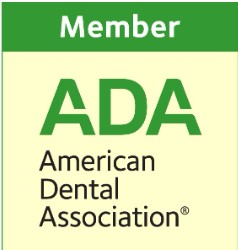Bridges Dayton, OH
 Dental bridges offer a wonderful tooth replacement option for patients missing one or more consecutive teeth. Our Dayton dental practice provides a variety of dental bridges, and Dr. Sato can help you determine which is the best choice for you.
Dental bridges offer a wonderful tooth replacement option for patients missing one or more consecutive teeth. Our Dayton dental practice provides a variety of dental bridges, and Dr. Sato can help you determine which is the best choice for you.
What Is a Dental Bridge?
A dental bridge consists of one or more crowns — the “bridge” portion of a dental bridge — anchored to two supporting teeth. In essence, a dental bridge bridges the gap caused by one or more missing teeth in a row.
What Happens When You Don’t Replace Missing Teeth?
When a patient is missing one or more missing teeth, the gap not only causes aesthetic concerns about the appearance of your smile but can also lead to problems with the health and functionality of your smile.
When a gap between teeth is not repaired with a tooth replacement, the nearby teeth eventually shift and move into the empty space. This can cause problems with speaking and chewing, in addition to an uncomfortable, unnatural-feeling bite.
As a result, patients often develop TMJ disorders, experience painful symptoms, have trouble speaking and eating normally, and they can end up with excessive wear and tear on their other teeth, causing even more damage to their oral health.
The Benefits of Replacing Missing Teeth With a Dental Bridge
Filling the gap inside your mouth with a dental bridge restores the form and function of your teeth while safeguarding the other teeth inside your mouth. Dental bridges are designed to look and feel natural, resembling and blending in seamlessly with your natural teeth.
Types of Dental Bridges
There are several types of bridges designed to meet a variety of tooth replacement needs.
Traditional Dental Bridge
A traditional dental bridge affixes permanently to two caps that fit seamlessly over the teeth neighboring the gap.
Implant-Supported Dental Bridge
An implant-supported dental bridge is anchored to two dental implants rather than to neighboring teeth.
Maryland Dental Bridge
A Maryland dental bridge is similar to a traditional bridge, but it uses metal wings and wires to attach to neighboring teeth rather than crowns or dental anchors.
Cantilever Dental Bridge
A cantilever dental bridge can be used when there’s only one tooth on one side of the missing teeth that’s suitable for use as an anchor. However, cantilever bridges are not recommended for replacing molars missing from the back of the mouth because too much pressure from chewing is placed on these teeth for a cantilever bridge to withstand.
Is a Dental Bridge Right for You?
If you’re missing one or more consecutive teeth in a row, a dental bridge might be the perfect option for replacing your missing teeth and restoring your smile.
If you’d like to learn more, we welcome you to schedule an appointment with our Steve A. Sato, DDS team. Dr. Sato can talk with you about all your dental bridge and other tooth replacement options to help you determine the course of treatment that will best meet your needs.




